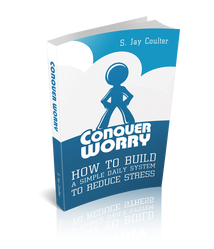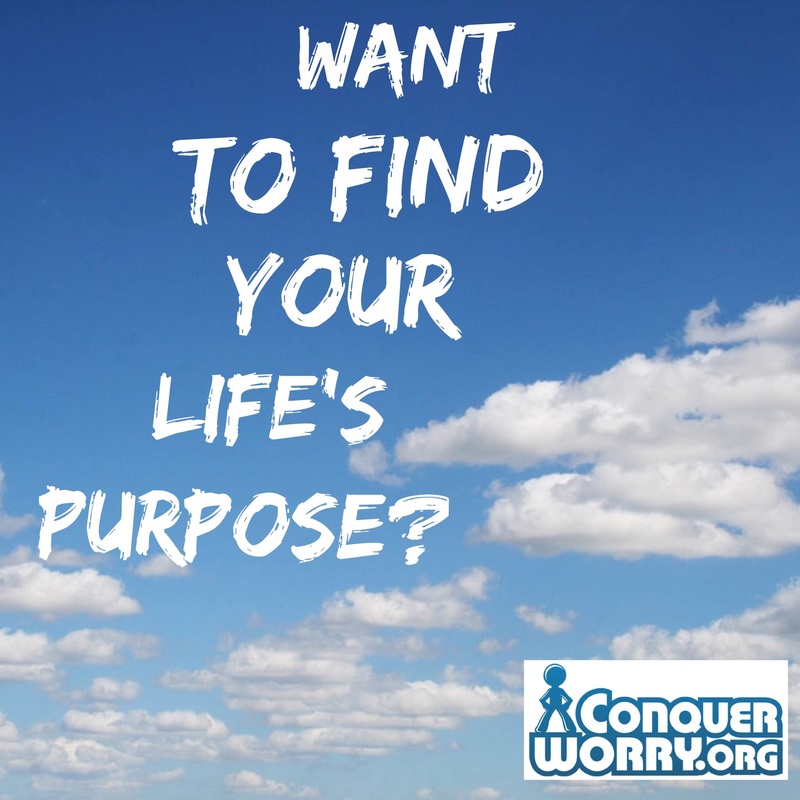|
To Whom It May Concern: Why is it that when there is a death by disease or accident, there is awareness raised throughout the community but when there is an intentional death, there is silence? Recently, as we are aware, there has been an increase in the number of suicides at high schools throughout Westchester County, New York. Legally, toying with the word “suicide” is dangerous, so instead it seems as if we have chosen not to address it at all in hopes to avoid conflict. Maybe people also believe that by not talking about it, the pain will go away since we aren’t having the thought in the front of our minds constantly. All of these suspicions are completely wrong. Growing up, people want to hide factors such as mental health conditions to young kids and teenagers because it can potentially worry them or maybe thinking that since of the age, the child won’t be able to process this thought well. In a high school, it is completely understood that all of these factors may come into play but it is not understood that there are other things that the administration can do to support the cause and raise awareness but they are not. It is never okay to silence an incident like this and pretend like nothing happened as we all go about our daily lives. We are here to end the silence. If you think about it from the point of view of a family member or close friend, it is heartbreaking to lose someone who held a fraction of your heart. It makes it even worse that many schools are doing nothing to try to relieve the pain in any sort of way. The guidance counselors and psychologists say that they are around 24/7 for us students to go to and talk about how we are feeling, but what does it really say about the school when, the next day, the death is mentioned only once and seemed like an obligatory address, not even enough to commemorate the loss we have all just suffered. As attending students of a school that has lost students to suicide, we understand the pros and cons and legal issues involved with this situation but it is not in any way acceptable that this event passes without any acknowledgement except the day it happened. We know that for the sake of this students parents and their security, they may not want an assembly showcasing the tragedy, and we are not asking for an assembly or anything of that nature to be addressing that directly. What we are asking is that we show some love and acknowledgement all around the school and to have an assembly to honor people with mental health conditions, to show that everybody is cherished and remembered in different ways and to lastly show that there are ways to help and potentially prevent extreme measures having to be taken. After all, our school motto is “Acknowledge, Respect, and Unite,” so we need to maintain our stance on that saying, especially during a hardship like this. Every individual handles grieving differently, but the worst way to handle it, is for the feelings, whatever they may be, to stay festering inside of one's mind. It is prominent that many students are upset at not only this unfortunate event, but that the school’s lack of attention to it (personally speaking). The silence needs to be ended, and if the school cannot talk about mental health or mental illness in a mature and sensitive way to the students, a few of us are willing to go beyond our high school and onto a national organization which we have already reached out to. The goal is to help raise awareness and make sure people know that traumatic events like this can be prevented. There are always people that will listen, even if it is uncomfortable to talk about mental health conditions. Growing up in a family that has had/have a couple of people with mental health issues, it was hidden from me all of my life until recently I had to do my own digging to help the facts become uncovered. It is obvious that my family did not want to talk to/ open up to me nor each other about the serious issues going on and I have had enough of that at home and I will not stand for it at school either. There is nothing to hide from people about a chemical imbalance of the brain which is uncontrollable. The serious issue that we face in our society is that mental health conditions are more often than not, labeled as a flaw or problem, when in fact it is quite the opposite. By being silent we are feeding into the stigma that a mental illness is a problem or something to fear, when in reality the statistics show that someone living with a mental health condition is much more likely to be a victim of circumstances. Talking about this issue to students and young adults is very touchy but there are ways to properly go about it. The road to recovery or any healing process is something that people need support with and which is why our school needs to take this almost as a wake-up call and educate people on mental health disorders and the facts of the matter that go along with it. Not all students may feel this way, but I am speaking on behalf of the students who are upset by the recent events. Once again, we are not asking that the school addresses the recent death, we are just hoping to raise awareness and help the healing process for friends and family because it is contemptuous for a life to be lost and make it seem like nothing happened. It is not natural for people to recover from such a traumatic experience at such a young age quickly or quietly. This calls for a great need of support in this community and it seems to be that a lot of people are handling this in the wrong way. Hopefully there is a solution that can be negotiated to benefit both sides of the spectrum. Thank you. Respectfully, A Concerned High School Student The author of this letter has chosen to remain anonymous. Conquer Worry obtained permission to print before posting the letter.
0 Comments
Article by Irving Schattner Edit and post design by Christy Zigweid Photo by JESHOOTS via Pixabay made using @WordSwagApp Online therapy has been receiving a lot of attention lately. It refers to therapy conducted remotely via the internet or over the phone. There are a number of applications that allow for sessions to take place via computer, iPad, or smartphone. Online therapy has some advantages over traditional in-office therapy: It doesn’t require the time and expense of traveling and it allows clients greater flexibility to engage with a therapist in the comfort of one’s home. For those whom transportation is difficult (they don’t drive and either have to depend on or pay someone to drive them to and from therapy sessions), online therapy can be a practical alternative, offering them access to services normally not available or accessible. Image by PublicDomainPictures via Pixabay Benefits of Video TherapyPersons with a fear of driving or lack of access to alternative forms of transportation, can engage with a therapist in the privacy and safety of one’s home. This may be especially helpful for those suffering with agoraphobia and/or social phobia or generalized anxiety, as well as others with incapacitating physical or health problems that pose extreme hardship in getting to the therapist’s office. Persons suffering with severe depression may also be reluctant, fearful, or unwilling to venture outside of their home and can benefit from face-to-face guidance and support with a trained psychotherapist via the internet. Photo by Wokandapix via Pixabay Clients with busy schedules may find online therapy particularly appealing, which increases their access to mental health services. For those living in remote (rural) areas where mental health services are not readily available or accessible, online therapy offers access to needed mental health services. The advantages of online therapy and counseling include: it's a good option for remote areas, it offers accessibility for those with physical limitations, it's convenient and affordable, and lastly online therapy makes information more accessible to reach a wider audience. About the Author - Irving Schattner, LCSW
Article by Matt Gonzales Edit and post design by Christy Zigweid Photo by lechenie-narkomanii via Pixabay made using @WordSwagApp Drug or alcohol addiction impacts lives. It can fracture a person’s relationships, affect his or her academic or job performance, and put the individual’s health at risk. Substance abuse can weaken a person’s immune system or cause seizures, stroke, or brain damage. Addiction can also lead to the development of mental illness, such as anxiety or depression. Mental diseases affect the way an individual thinks and his or her behavioral patterns. Some mental disorders, such as panic disorder, are rooted in anxiety. Other mental disorders, such as post-traumatic stress disorder, involve unwanted, intrusive thoughts. Nearly 44 million U.S. adults experience mental illness in a given year, according to the National Alliance on Mental Illness (NAMI). About 13.6 million adults in the United States live with a serious mental illness. According to NAMI: 18.1 percent of U.S. adults live with an anxiety disorder About 20 percent of Americans with an anxiety or mood disorder have a substance use disorder, according to the Anxiety and Depression Association of America. Conversely, about 20 percent of those with addiction have an anxiety or mood disorder. Mental disorders can lead to drug or alcohol addiction, as well. Men are more likely than women to develop a co-occurring disorder. People of lower socioeconomic status, military veterans, and individuals with general medical illnesses are also at risk for developing a co-occurring disorder. People with mental illness often use drugs or alcohol to self-medicate. However, substance abuse can worsen symptoms of mental illness and trigger new symptoms. Self-medication can also lead to addiction. A 2010 study published in the journal Current Drug Safety outlined the consequences of self-medication. Individuals who self-medicate may self-diagnose incorrectly, fail to seek medical help, or take a dangerous amount of the substance. People self-medicate using drugs or alcohol to numb physical or emotional pain. For example, someone with anxiety may discover that a few drinks and some marijuana take the edge off in social situations. But the more an individual uses these substances to manage stress, the less able he or she is to cope in healthy ways. Substance abuse is common among people with social anxiety disorder, a mental illness characterized by an extreme fear of being scrutinized or judged in social or performance situations. Drinking in social situations may reduce anxiety, but it can also result in alcohol abuse. PTSD and substance abuse also frequently occur together. People with PTSD often use drugs or alcohol to alleviate emotional pain. However, these substances have shown to worsen PTSD symptoms. Many mental health professionals treat PTSD and substance abuse together because symptoms of this mental illness can lead to relapse. Those with co-occurring disorders should seek treatment immediately. Rehab centers across the United States offer a continuum of care catered to each individual’s needs. People who have completed treatment and are in recovery go on to live healthy lives while maintaining successful careers. SourcesAnxiety and Depression Association of America. (2016, June). Social Anxiety Disorder. Retrieved from https://www.adaa.org/understanding-anxiety/social-anxiety-disorder Anxiety and Depression Association of America. (n.d.). Substance Use Disorders. Retrieved from https://www.adaa.org/understanding-anxiety/related-illnesses/substance-abuse Dayton, T. (2013, July 9). Why We ‘Self-Medicate’ Our Own Depression or Anxiety. Retrieved from http://www.huffingtonpost.com/dr-tian-dayton/self-medication_b_3236724.html National Alliance on Mental Illness. (n.d.). Dual Diagnosis. Retrieved from http://www.nami.org/Learn-More/Mental-Health-Conditions/Related-Conditions/Dual-Diagnosis National Alliance on Mental Illness. (n.d.). Drugs, Alcohol and Smoking. Retrieved from http://www.nami.org/Find-Support/Living-with-a-Mental-Health-Condition/Taking-Care-of-Your-Body/Drugs,-Alcohol-Smoking National Alliance on Mental Illness. (n.d.). Mental Health Facts In America. Retrieved from https://www.nami.org/getattachment/Learn-More/Mental-Health-By-the-Numbers/General-MH-Facts-4-12-15.pdf National Council on Alcoholism and Drug Dependence Inc. (2015, July 25). Alcoholism, Drug Dependence and Co-Occurring Disorders. Retrieved from https://www.ncadd.org/about-addiction/signs-and-symptoms/co-occurring-disorders Ruiz, M.E. (2010, October). Risks of self-medication practices. Retrieved from https://www.ncbi.nlm.nih.gov/pubmed/20615179 Substance Abuse and Mental Health Services Administration. (2016, March 8). Mental and Substance Use Disorders. Retrieved from http://www.samhsa.gov/disorders About the AuthorMatt Gonzales is a writer and researcher for DrugRehab.com. He boasts several years of experience writing for a daily publication, multiple weekly journals, a quarterly magazine and various online platforms. He has a bachelor’s degree in communication, with a Journalism concentration, from East Carolina University. Follow him on Twitter.
Article by Irving Schattner Edit and post design by Christy Zigweid Photo by Unsplash via Pixabay made using @WordSwagApp Our brains are constantly working. Neurons are firing and chemicals are released and absorbed, leading to thoughts, emotions, and actions. Whether we are in a state of motion, standing still or sleeping, our brains accommodate to ever-changing circumstances and states of consciousness. As much as we may try to convince ourselves of the need to slow down the process of brain function, there are elements of biology and conditioning that dictate the flow of energy circulating up the spine into our brain and down to our organs. That is a given. What is less of a given is the extent to which we can exercise control over our brain and, therefore, bodily organs. The extent to which we are able to exert conscious control over mind and body can be dictated by a number of factors. One factor is how aware we are of what we think and feel. It is through conscious awareness that we can begin to gain some mastery over how we channel our thoughts, emotions, and actions. “Failure to be aware” leads to automatic thoughts, feelings, and actions that may be counterproductive to our goals. While this may seem an obvious conclusion, many people in distress often find themselves “stuck” in the very patterns which perpetuate and even exacerbate the problems from which they seek freedom. For some in distress, it is more comfortable to accept one’s fate than to examine what influences and motivations keep them from seeking change and joy. Admittedly it is a daunting task to examine that which is hidden from consciousness, and break through the defense mechanisms often used as self-protection. To engage in a process of self-awareness can begin the process of change. If we continue to ignore or avoid what has been brought to our consciousness, we perpetuate self-sabotage. Some believe that motivation is what is needed and continue to wait for motivation that never comes. The stark reality is that motivation is usually achieved by the mere act of doing. The act of doing, or being, may seem at times like an uphill battle, but once undertaken becomes a process through which motivation is reinforced. In other words, one can sit idly by and think about taking action, or one can learn through repeated attempts (trial and error) until success is achieved. Success is best achieved when fear of failure is challenged through opportunities for learning made possible by taking action. By taking action, assessing what went right and what needs to be modified or corrected, one is on the path to adaptive change. Unfortunately, having gained conscious awareness (or understanding), many people in distress often recoil into typical patterns of thinking and behaviors which further reinforce their negative self-image and disbelief in their ability to gain mastery over their distress. The fortunate few, often with the guidance, support, and encouragement of a well-trained mental health professional, are determined to undertake this next phase of action which flows from their newly-discovered awareness. It is my wish for each one of you that you take the necessary steps to move from awareness to action, in order to achieve a life of joy, purpose, and direction. Show the courage to change. Reach out and give me a call so we can explore taking this journey together. The rewards are fantastic! About the Author - Irving Schattner, LCSW
Article by Irving Schattner Edit and post design by Christy Zigweid Photo by Silentpilot via Pixabay made using @WordSwagApp As we head into a new year, I am reminded of how many people are out there needlessly suffering with anxiety and depression. I also ask myself why so many people are willing to “settle” when their lives could be so much better; filled with joy, purpose and direction. As I ponder this question, I am reminded of my own experience with anxiety and the years it “stole” from me; how it zapped my energy, denying me simple pleasures of life and forcing me to pass on opportunities that could have enriched my life. I remember an old television commercial from the United Negro College Fund stating how “a mind is a terrible thing to waste,” I reflect back on my own negative state of mind and how it colored a distorted lens through which I viewed myself and the world around me. My negative state of being easily led to feelings of frustration, anger, suspicion and, at times, hopelessness and despair. Yes, there were good times, but even the good times were short-lived, as anxiety and its aftermath would once again take hold and bring me back to my reality. And so, because I struggled with anxiety and feelings of sadness, hopelessness and despair, I contemplated the value of my worth which translated into a poor sense of self. Feeling somewhat lost and disconnected led me to feel sorry for myself and so rather than take action to do something to manage and overcome my negative emotional state, I continued to daydream about what my life could be like. I was living without a sense of real joy, purpose, or connection with myself and the world around me. It was hard for me to imagine anything other than how lousy I felt. Although I made my mark on some occasions and went through the motions on other occasions, I continued to feel unfulfilled and ridden with anticipatory and situational anxiety. Unrealistically high expectations, a need to be perfect, possessing a strong need for approval, and fearing negative evaluation were the by-products of my anticipatory and social / situational anxiety. Seeing no way out, there were times when I pondered my miserable existence by entertaining thoughts of departing from this Earth. Fortunately, for me, these were only thoughts as I had no plans of acting on them. Realizing that doing myself in was a one-way trip with no return, I continued to hold out some hope that one day I would overcome my anxiety and live with joy, purpose and connection. Fortunately for me, that day came. I saw an ad in the local newspaper (this was many years ago before there were computers or the internet) advertising a group for persons suffering with anxiety and depression. Of course, as fear was typically my guide, I came up with a number of reasons why I couldn’t attend:
Despite all these excuses, I finally decided that despite my suspicion and ambivalence about how the group could be of help, I would give it a shot and go. Photo by vait_mcright via Pixabay So, I showed up to group about a half-hour earlier in order to ease myself into this potentially terrifying situation. The last thing I wanted to do was walk in and have all eyes upon me. As each new member showed up, I said “hello” and introduced myself in an attempt to desensitize myself from the anxiety of what was yet to come. When all the members filed in, and the group room door was closed, I felt a wave of intense panic overcome me. My immediate thoughts were “What the hell am I doing here?" followed by “What if they notice how nervous I am?” and “What if I feel the need to walk out and leave?” It was a living hell on Earth. Despite my intense fear and anxiety, I did stay (probably because I was too embarrassed to draw attention to leaving) and somehow muddled through. Sitting in a group filled with fellow anxiety suffers, my thoughts were focused on how “together” many of the members appeared and how out of place I felt. I was going through the motions while frozen with fear. I listened to people share and when it was my turn, I shared very little and was quite general and superficial. In what seemed like an out-of-body experience, I listened to what others had to share while very much preoccupied with my own internal state of mind and physiological state. When the group adjourned for the evening, I felt relief, said goodbye, got into my car, and went home. On the way home, my anxiety eventually diminished while my evaluative self remained. Despite my success at attending the anxiety group, my anticipatory anxiety persisted as I continued to ponder reasons for not returning to next week’s group. The closer I got to the day of the next group, the stronger these negative feelings were. Despite my excuses and negative frame of mind, I went back to group the following week, followed by the next week and the week following that, and so on. With each meeting, I shared more and came to realize that no one was judging me; I was the only one doing the judging. And...over time, my comfort level with group increased. I came to realize that despite our different life experiences, we all shared the burden of living with anxiety and were all committed to finding freedom through mutual aid and support. Photo by rebeccaread via Pixabay Attending the anxiety group was a turning point in my life. It led me to pursue individual therapy, where I unraveled the mystery behind what was fueling my anxiety and learned healthy strategies for finding joy, purpose and direction. My most important lesson in therapy was learning that despite my worst fears and scenarios, my anxiety would not kill me. I came to realize that the more I tried to hold onto or “control my anxiety,” the more my anxiety controlled me. (This is known as a “paradox,” which involves doing the opposite of what your brain is telling you to do). And so, despite my initial resistance, with support, encouragement, and even prodding by my therapist, I began to allow myself to feel that which I feared most – my anxiety. At first it was scary as hell. My therapist was asking me to do the very thing I was avoiding, facing my anxiety and allowing it to pass through me while continuing to do whatever I was doing. But with repeated practice, my anxiety came to diminish in intensity, as I allowed myself to “face it, feel it, and let it pass through.” Through this process of walking through my anxiety, I came to the realization that fighting my anxiety was futile, and learning to accept (rather than fear) what I was feeling was my answer to gaining freedom from anxiety. In telling my personal story, my wish is for you to reach out and seek help. If I can do it, so can you. It takes some courage and persistence, but the payoff is tremendous. Since my recovery from anxiety, my life has only gotten better. Yes, like most people, I still feel anxiety from time to time, but it no longer throws me into a panic. I now see my anxiety as a way of letting me know that something is troubling me and use the skills learned in therapy to channel this anxiety for positive change. And… as a licensed clinical social worker / psychotherapist, I’ve taken what I’ve learned (both personally and professionally) into helping others achieve freedom from anxiety and depression. Take the challenge… step out of your comfort zone, attend a support group and seek professional help for your anxiety and depression. Warm regards, Irving Schattner, LCSW About the Author - Irving Schattner, LCSW
Guest post by Irving Schattner Edit and post design by Christy Zigweid Photo by PublicDomainPIctures via Pixabay created using @WordSwagApp For many people suffering from anxiety or depression, the Holiday season and New Year can be a difficult time. Unrealistic expectations or commitments, family connection or disconnection, social isolation, financial problems, grief and loss, geographic change, and less sunlight can lead to stress, anxiety, sadness, and depression. Headaches and body aches, over-eating, excessive spending, and insomnia are a few ways in which the inability to cope with the holiday blues can manifest themselves. During such times, it is important to develop a plan of action to head off or derail the effects of the holiday blues. If untreated, they can last way beyond the holiday season and into the New Year. For some people, increased social support can be of great benefit. This may include connecting with old friends or family members. Facebook and other social media, as well as the old-fashioned phone call are tried and true methods. The meetup.com site is a great way to connect with people who share your interests. Counseling and support groups are other ways of self-exploration and learning to connect with the world outside of yourself. For people suffering with season affective disorder (SAD), which is associated with shorter days of sunlight, increased exposure to the outdoors as well as phototherapy 30 minutes daily (25 times as bright as normal lighting), can help increase feelings of well-being. Photo by PublicDomainPictures via Pixabay While for some the holiday season means good, happy times with friends and family, for many people it represents a time of sadness, debilitating self-reflection, loneliness, and anxiety, resulting in fatigue, unrealistic expectations, financial pressures, and commercial expectation to go out and spend money. Too often they are plagued with unfulfilled goals and focus on what’s not right in their lives. The demand to conform to external expectations of what it means to be in the holiday spirit may contradict one’s actual life experience. This leads to internal conflict, somatic ailments, and psychological and emotional distress. Risk factors for stress, anxiety, and depression include, but are not limited to: lack of adequate social support, recent or past trauma, life changes, substance abuse, balancing the demands and expectations of family vs. setting appropriate limits or boundaries, house guests whose presence creates increased tension, and insomnia or isolation. Photo by CC0 Public Domain via Pixabay Tips for managing holiday stress
About the Author - Irving Schattner, LCSW
As a little girl, I was a worrier. I worried about silly things like spiders in my bed, aliens living next door, whether my friends liked me, and what to wear to school. As I grew, so did my worries. Boyfriends and jobs, teachers and classes, filled my thoughts, the normal concerns of any young girl. But there were other worries that consumed me, like a brother who ran away, and another who clung to me when parents fought. I worried about our parents, and whether their worries would tear them apart. I worried myself into teenage anorexia, which became my coping mechanism for dealing with stress. As a teen, I was expected to fit in, eat with my friends, and munch on snacks all day long, which made me eventually give up anorexia, and worry about my weight. Every time I thought about my weight, I exercised, twirled my hair, fidgeted in my chair, and clicked my fingers, my new ways of dealing with anxiety. Photo by mojzagrebinfo via Pixabay I worried so much, I was often sick, sometimes for a month at a time. I missed school, and wondered if I’d get my work done, or even pass my grade. I worried about the flu and colds I often developed, unexplained fevers, and sores that covered the inside of my mouth. By adulthood, I was a flustered, stressed-out, overthinking mess. Only by now, I was getting better at hiding my worries. I hid them behind too much work and fussing constantly in my home. I disguised my worries in sleepless nights. No one, not my children, parents, or husband, knew the constant brooding in my head. I guess you could say, in some strange way, I had control over my worries. Only I didn’t. A few years ago, they all came tumbling out. As my husband and I sat in our car, waiting to turn into a tiny fruit stand, another vehicle rammed into us. I don’t remember the crush of metal against metal, or my brain being flung from one side of my skull to another. What I do remember is standing on the side of the road after the accident, and panicking. Heart-thumping, body-shaking, sweat-dripping, panic. In one brief second, the only control I’d ever had over my worries, was gone, and there was nothing I could do. And to this day, I still have problems controlling my panic. Photo by Alexas_Fotos via Pixabay Recently, a string of events, some unforeseen, some planned, sent me over the proverbial edge. In less than two months, three sets of guests stayed overnight, my husband lost one job and gained another, we went on an out-of-state trip, I was called to jury duty, and I experienced a health scare. To top it off, my children were experiencing their own sets of problems, and though they are adults, I still worried. I worried about everyone those few months: My guests, whether they were happy, comfortable, and having fun; my husband, his old job, his new job, his salary, his benefits. I worried about my children, and their futures. I even found time to worry about a brother who was moving away. It wasn’t unusual for me to worry, but now, my worries were different. I no longer knew how to control them. I no longer knew how to hide behind daily activities. Those two months were filled with a shaking body, constant tears, and a temper that flared for no reason. When it was over, I’d fall in bed, confused, and exhausted beyond belief. Other things had changed in me as well. Worry wasn’t just a part of my life, it consumed me. So much, I’d forget to eat, nap, and exercise. In other words, I’d forget about me. It wasn’t until I received the envelope from the courthouse that I began to figure it out. I knew what it was before I opened it. With shaking hands, I read the neatly printed words on the page, and began to cry. “What is it?” asked my husband. “I have jury duty.” Thoughts raced through my mind. How could I sit in a stuffy courtroom, next to people I didn’t know? What if I didn’t understand what was being said? What if I got tired or needed to eat? Instead of thinking it through, I worried about every scenario. “I can’t do it,” I cried. My husband took me in his arms. “You were called to jury duty a few years ago,” he said. “Your doctor wrote a letter. Call her tomorrow. I’m sure she’ll write another one.” She did. But until I had that final notice in my hand, the one that said I wasn’t required to show up for jury duty, I was a freaked-out, stressed, worried mess. Unfortunately, I had one more thing to worry about. The next week, I received a call from a medical specialist I had recently seen. “We found something on your tests. You need a biopsy,” she said. I hung up the phone, and began to sob. I cried until every muscle ached and my mind reeled with tons of thoughts and emotions. I was convinced life was over, that I’d never celebrate another Christmas, never see another birthday. I was saddened by a family I’d lose, one that I’d no longer be there for, one I wouldn’t see grow and change. By the time I went to the doctor, I was falling apart. Every crease in my face accentuated, every muscle tensed, every word shook as I spoke. A nurse was brought in to hold my hand during my biopsy. As I look back now, I am truly embarrassed by the way I acted. It’s true, it was a stressful time. It would have been stressful for anyone. But I wonder if others would have reacted the way I did. I’ve tried to gain control of my emotions, my worries, my life, but I’m not certain I can. It is a part of who I am, a flaw I am learning to live with. But I know this, I will never quit trying. If anything good has come from my emotional traumas, it is this: My marriage is stronger, for I no longer hide behind flaws. Each flaw is beautifully displayed, for my husband, and all the world, to see; I am stronger. I am learning every day to accept who I am; and most importantly, I am learning to take care of me. About the Author
Guest Post by Irving Schattner Edit and Post Design by Christy Zigweid Photo by PublicDomainPictures via Pixabay made using @WordSwagApp What is Panic Disorder? According to the Anxiety and Depression Association of America, “panic disorder is diagnosed in people who experience spontaneous, seemingly out of the blue attacks and are preoccupied with the fear of a reoccurring attack. Panic attacks occur unexpectedly, sometimes even during sleep.” The fear that is felt during a panic attack can last several minutes and is usually unexpected. Most people are visibly distraught after an attack occurs and fear the re-occurrence of another panic attack. Some are so severe that they can be mistaken for a heart attack, leading one to check into a hospital emergency room in hope of finding a physical explanation. Most typically, the patient is administered an anti-anxiety medication by ER staff and told there is nothing physically wrong–that they are suffering from anxiety or stress. Lacking a physical explanation for their panic, they often feel different from everyone and wonder “Am I going crazy?” Not getting the help or answers they so desperately need leads to shame, guilt, further avoidance and, quite often, the belief that they are doomed to suffer in silence and are beyond help. Photo by Sorbyphoto via Pixabay The disorder, if left untreated, not only reinforces continued avoidance of the feared situation (for example, in the case where an attack occurred while driving, you may seek alternative routes or stop driving all together). The anticipation of having another attack may generalize into situations previously not associated with the original fear or panic. This disorder may also lead to agoraphobia, which is characterized by severe anxiety in situations where an individual feels trapped by their surroundings. Panic sufferers may also experience anticipatory anxiety and generalized anxiety. This disorder can create significant psychological, emotional, and physical distress, as well as avoidance of opportunities for personal and professional growth, relationships, and happiness. Treatment for Panic DisorderPanic disorder (and other anxiety disorders) require specific targeted interventions that are individually tailored to the needs of the client (as no two clients are alike). It is crucial that you receive the guidance, coaching, and expertise of a mental health professional who “specializes” in treating panic (and other anxiety disorders), as traditional “talk therapy” is ineffective. The following approaches are evidence-based and proven as most effective for the relief of panic (and other disorders). They include:
There’s no need to suffer About the Author - Irving Schattner, LCSW
Article by Two Wise Chicks Post design by Christy Zigweid Picture by StartupStockPhotos via Pixabay made using @wordswagapp Mental Health Week is drawing to a close and we are very happy. There is a real shift towards people truly understanding that it is OK to not always feel OK... and that asking for support is OK, too. This change means that people around the world are beginning to not just think - but KNOW - that each of us has feelings, needs and fundamental worth, and that if we are struggling with these things, change is possible. Shame-free, guilt-free change. What to do?! Where to go?! Because we are learning to claim our right to feel better, many more of us are choosing therapy as part of a life-improvement process. But what seems to perplex a lot of people though is how to choose a therapist. So, we've pulled together some helpful guidelines if you or a loved one has decided to see a therapist, psychologist or counsellor (there are some important differences).
What are the things I should be looking for in a therapist?Your first step might be to ask your doctor (GP) for a referral. Most, although not all, therapists and counsellors will make themselves known to the doctors (GPs) in their local area. If you have a good relationship with your doctor they may be able to match you with a suitable person. Bear in mind that your doctor may not ever have met the therapist in question and so a referral from a doctor is not a guarantee of a fit (nothing is really, you can only decided that yourself). Ask your friends and family if they can recommend someone to you. Psychologists, counsellors and therapists often get personal referrals - especially the good ones ;) - from people who discuss their therapists with their friends. A friend's recommendation is very useful because, well, they're your friend. So they may have an idea of who and what will suit you. Of course, remember that individuals vary, and what worked for you friend may not work for you and vice versa. Think of it as a guide, a good one - but not a guarantee. Shop around. You might get several referrals! If this is the case then please do feel OK about calling a few and seeing how you feel when you speak to them on the phone. It's a big decision and your comfort is important. Therapists are accustomed to speaking with people who are nervous, so there is no judgement. Check out their profile on LinkedIn, their Twitter, website and so on. Bear in mind that not all therapists have an online presence. If they have a license to practice (psychologist, social worker, etc.) check out the licensing body's website (more on that below). Interview your therapist. We would recommend speaking to them on the phone first, and many will offer a *free* phone call so you get a chance to connect and get a feel for the fit. We realize this might sound strange, but in essence you are about to employ this person. It is deeply personal work - the same as you might shop around for a new hairstylist, consider a therapist an EVEN MORE important decision. Here are some questions you might want to ask any therapist that you choose to contact:
Therapists are people too. Even with years and years of training and/or experience, a therapist will bring their own personality to their work. If you find that despite a pile of education and experience you do not feel comfortable with your therapist for ANY reason (their sense of humor bothers you, the perfume they wear makes you feel nauseous) - instead of judging yourself or discounting your feelings listen to your own gut. Address minor issues with your therapist if you feel comfortable doing so, but major personality conflicts will just get in the way of making progress in therapy. It's really okay to look for someone that feels like a better fit. These are the things we have learned to look out for over the years. Past clients have asked us these questions, we have answered most of these (and possibly more) for our clients, and coached the people we care about to ask these questions, too. Our hope is that they will help you come to as informed a decision as possible so that you can proceed knowing that you are safe. Have we left anything out?Please add your experience, comment or question in the comment section below. Good luck on your journey toward self-care! About the Authors Sally O’Reilly
Sally wants to help create a world of compassion for ourselves and others. A world where mistakes are allowed, gender roles don’t exist, sex ed in schools is a real thing and everyone dances – lovely! As a psychologist and psychotherapist in Ireland, she’s worked for nearly twenty years in private practice, with adults and trainee adults of all ages. She blogs on her own website, is a feature writer for super duper parenting websiteVoiceboks.com, does print and radio media work and has been known toTweet. She’s the one running our Twitter page! When she’s not working, you will find her engrossed in Science Fiction or some dark and Danish TV show, listening to music, watching the sea (while really, really wishing it were warmer), or figuring out how to work Lightroom on her Mac. All while munching on Bombay mix. #multitasker! She’s happiest when dancing and erm…. her cat has his own Facebook page. We won’t link to that, it’s too embarrassing.. Tanya Tinney Tanya looks forward to living in a world where people know their worth, respect boundaries, and always have time for tea and chocolate. A magic bubble that protects her from sticky fingers, hormonal girls and dog hair would be awesome as well. Her education and much of her training is in the areas of psychology and human potential. She worked as a licensed psychologist for over 14 years, with 10 of those years spent building her own successful private practice. In total, she has over 20 years of varied experience working, volunteering for non-profit agencies, and consulting to small business. Most recently she has launched her dream online coaching practice where she gets to work with motivated, amazing women who need help overcoming life’s hurdles. Exciting times! She has lived in Ireland, Ethiopia (okay, just 6 months), Canada, and currently lives in central Texas with her husband, three girls (including fraternal twins), two dogs and three cats. When she’s not finding ‘everyday moments’ to write about here or on herown blog, you can find her being walked by her dogs, unearthing unidentifiable food-objects under the couch cushions or baking her famous banana bread. Tanya runs our Facebook page – and not to be outdone by Sally’s cat, her dog has its own Facebook page too. Guest post by Jessica Morris Blog design by Christy Zigweid Photo by tspdave via Pixabay made using @WordSwagApp It is a single thought, triggering feelings of anxiety in my stomach that gravitate upwards towards my brain, and down towards my feet. It sweeps in, its dark cloak hiding the light of reality, shrouding my mind in confusion that will circle until I distract it, or until it becomes exhausted from repetition. In any case, it will eventually fly away, waiting for the next opportunity to come and consume my mind and body. My obsessive-compulsive tendencies do not appear like they say in the books. In them, they show pictures of people washing hands and meticulously lining up objects in order of color and size. I have been known to do these things, but they are not the compulsions that threaten to break me. Photo by geralt via Pixabay It is the thoughts. It is the constant cycle as they spin round and round and round and round—like a death march pulling me closer towards an abyss that doesn’t even exist. They create a maze, which, if I am not careful, I begin to believe I am trapped in. A maze of never-ending thoughts, feelings and uncontrollable behaviors. I hate my Obsessive Compulsive Disorder. I do not even like to call it mine; after all, it does not define me. It is but a collection of chemicals and synapses. But in those moments, when I can’t see or think of anything but that which I fear, I start to believe that we are one and the same. In the seconds the thought begins, it traces its way through my body towards a reaction. I have learnt to recognize it almost immediately. Once it would keep me up—minutes and hours and days spent obsessing over the same incident. Through time, however, I have become accustomed to OCD’s plans and schemes. How it latches onto words and names, faces and memories. How it likes to catch me off guard when I am tired and burnt out, delivering unfounded threats, saying it will topple my years in recovery and the many times I have conquered it. The moments it strikes are hard to overcome, because it is difficult to prevent your body from reacting to something it is programmed to respond to. It’s like having something wrestle you to the ground, but when you try to fight back, it increases its grip. Only by waiting out the moment does the thought and sensation lose its power. And ever so slowly, it leaves you alone and the chemicals in your brain make a new, healthier path, allowing you to see that the attacker wasn’t even really there. It was all just thoughts and chemicals, pulling you into a parallel reality. Sending you into panic mode. I know that I am stronger than these thoughts and compulsions. As a teenager I would visualize my fears, and they kept me shut inside my bedroom, afraid of myself and the world around me. I found freedom when I told my parents about these thoughts—about how I was scared they were real, and that I was living a lie. I found freedom when, with the support of my psychiatric nurse, I took short walks in the daylight, slowly decreasing my irrational fear of being attacked outside of the home. I found freedom when I realized that I didn’t want to die, even when the thoughts and compulsions told me I did. The truth is, OCD has robbed me of a lot. Sometimes it still tries to steal precious minutes of my days. But I have realized that who I am today—the strong, resilient woman I have become—would not exist without it. By facing OCD and anxiety, I have learned that small steps lead to grand adventures, and short walks outside bolster courage within me to explore new lands. By struggling with OCD and anxiety, I have learned to have empathy and compassion towards people who are different to me, because I have questioned my own identity too. By questioning OCD and anxiety, I have redefined and re-evaluated what I believe, and why I want to be alive. And by overcoming OCD and anxiety, I have learnt that this all-encompassing illness does not define me. I am not the thoughts it places in my head, or the panic that sets in about something I am in control of. I am not the insomnia, or the chemicals and hormones racing around my body, triggered by a lingering doubt in my mind. I am so much more than this. I am brave and bold, fearless and courageous. Yet I would not possess these in such great quantities if I did not battle with Obsessive Compulsive Disorder. I have hope that one day the OCD will pass forever. That the triggers of this season will cease, as did those of past years. That the fears they bring will be overcome with love and patience and trust. That I will become so confident and certain of my own worth and identity that the moment a thought attempts to trigger a compulsion it will be blocked by my own self-love. Until then, I ride it out. I take the moments OCD strikes as an indicator that I need rest, and I revel in the victory awaiting me on the other side of it. I redefine OCD as an illness, not an identity—a moment, rather than a lifetime. I am not my Obsessive Compulsive Disorder, but because of it I have become me. And that is why I will overcome it, every single time. This excerpt comes from Jessica’s memoir, When Hope Speaks available now from jessicamorris.net. About the Author
|
Build Your Action Based Stress Reduction System
Popular PodcastsOlympian Suzy Favor Hamilton - From Fame to Prostitution to Advocacy
Hall of Fame Basketball Star Chamique Holdsclaw on Mental Resilience Diana Nightingale on her husband Earl Nightingale's Principles for Mental Health Success JoAnn Buttaro on Date Rape & PTSD Survival Story: Its Never Too Late Gabe Howard on BiPolar Advocacy Phil Fulmer on Teen Suicide Prison, Bipolar and Mania with Andy Behrman Columbia Univeristy's Dr. Rynn on OCD Archives
March 2018
Categories
All
|

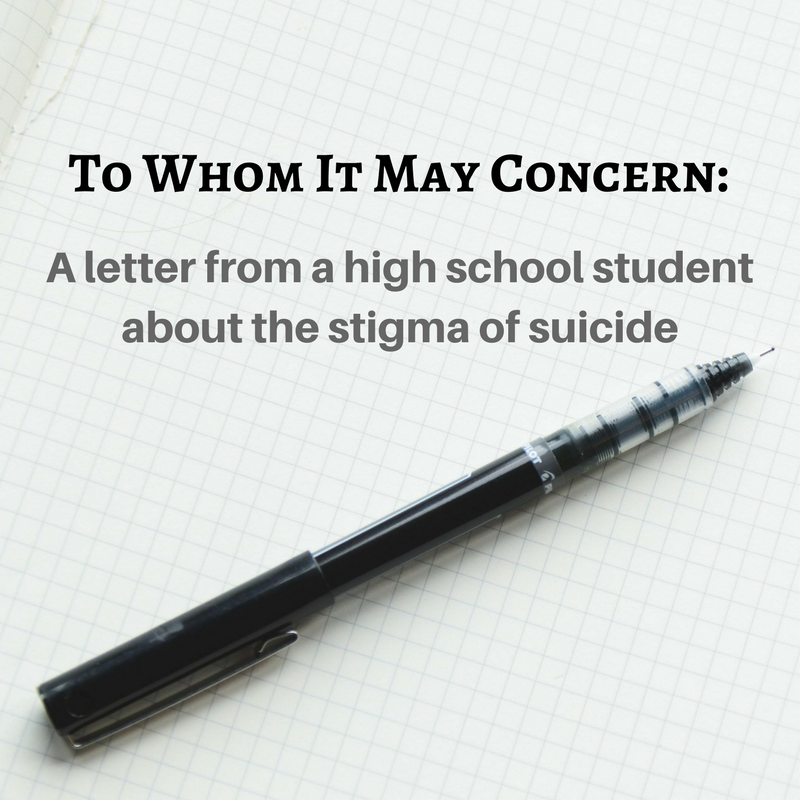
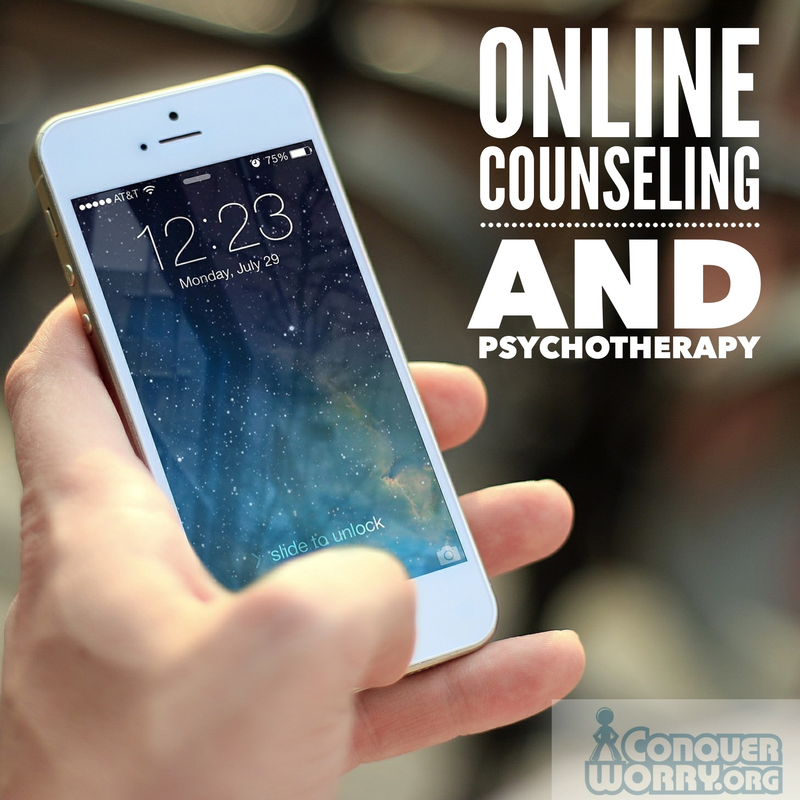

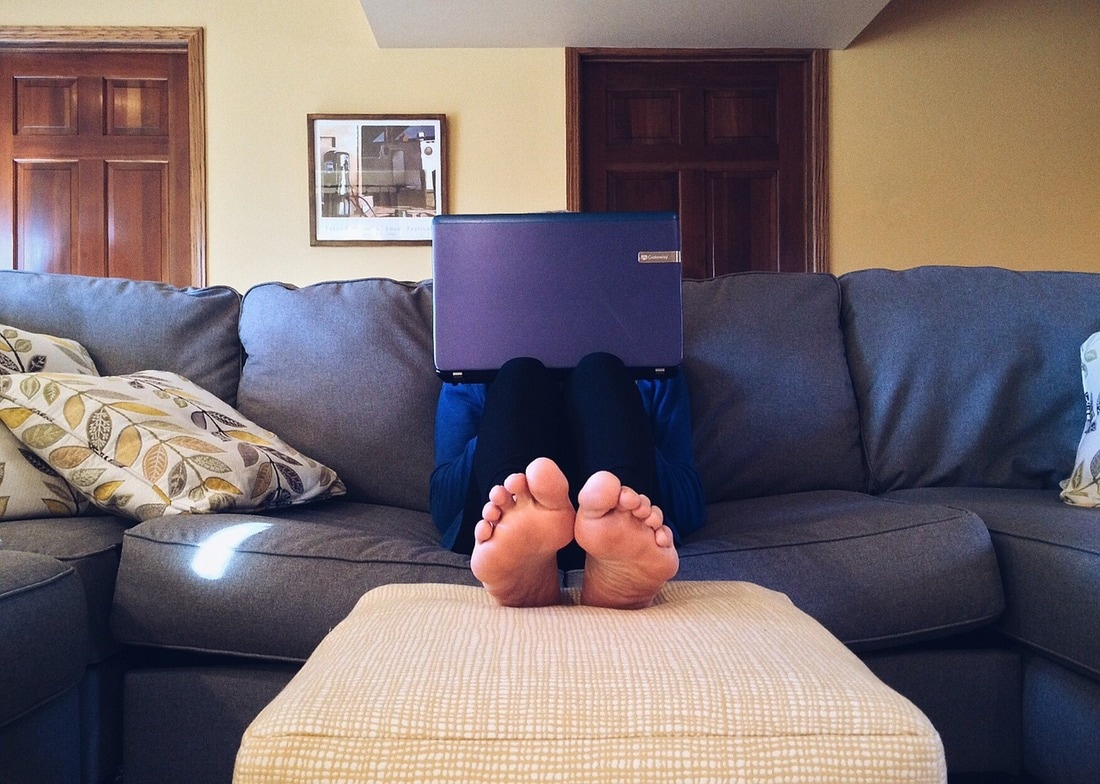
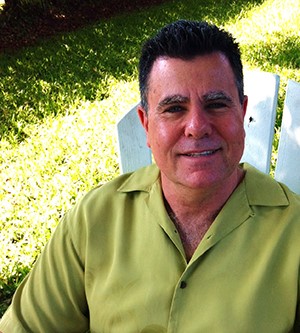
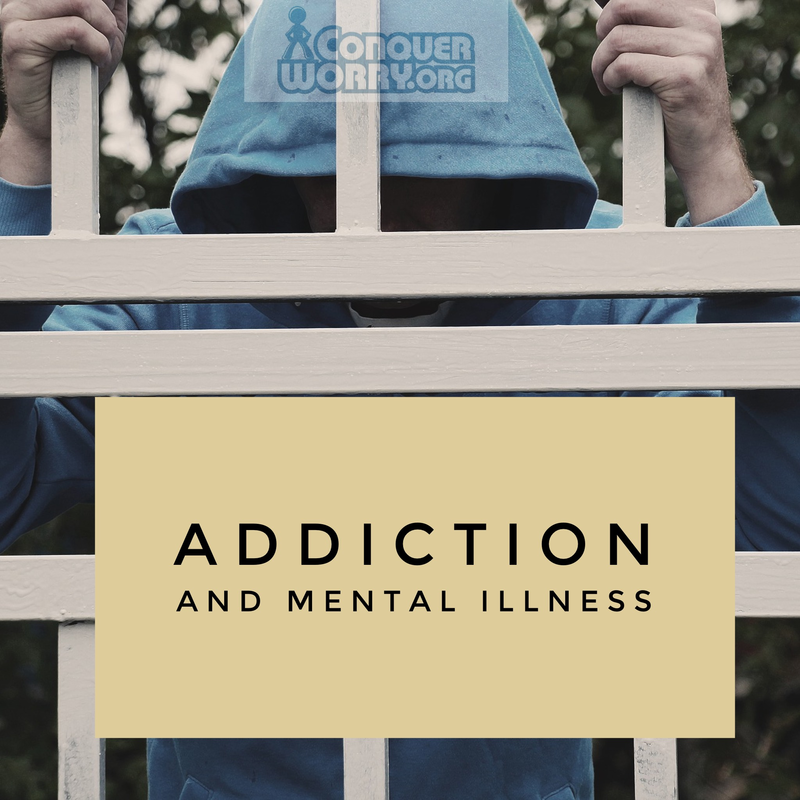

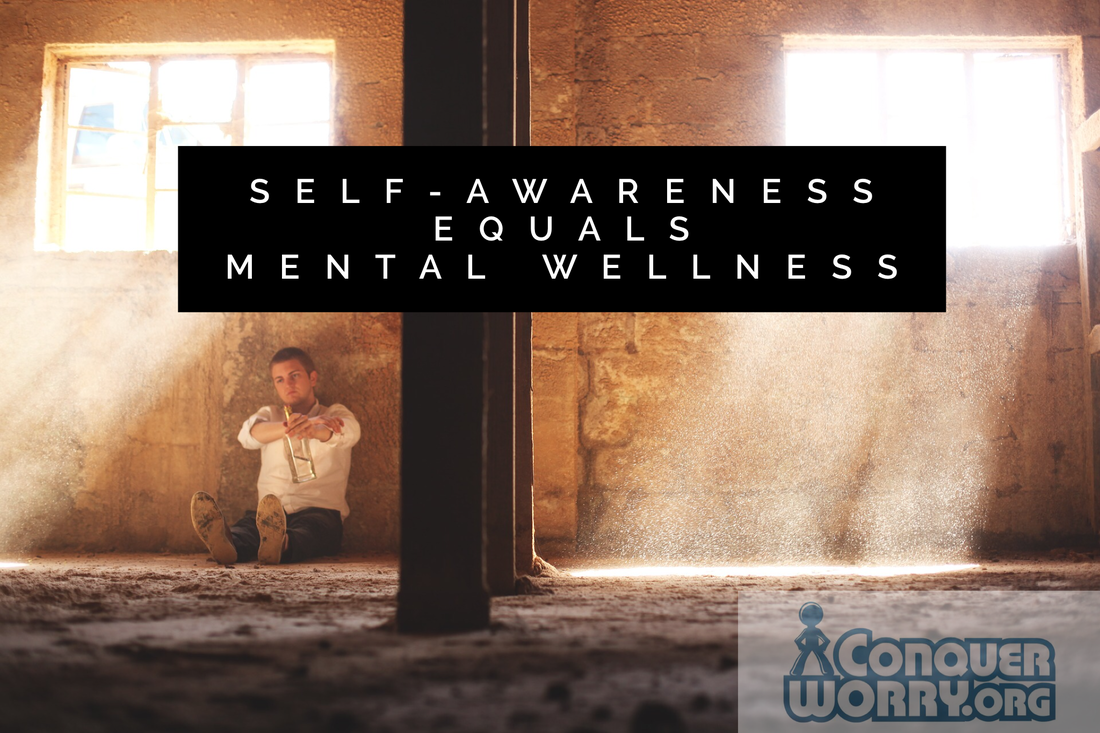
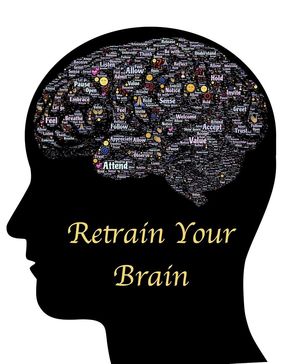

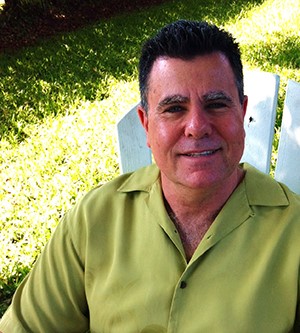

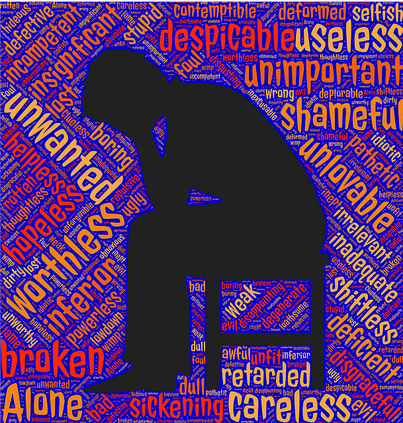


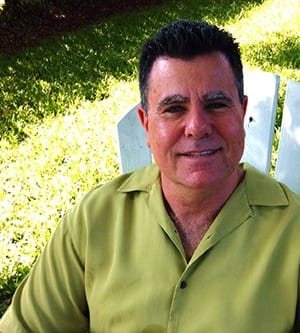



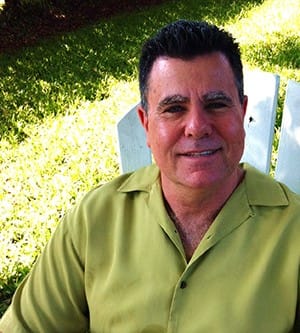
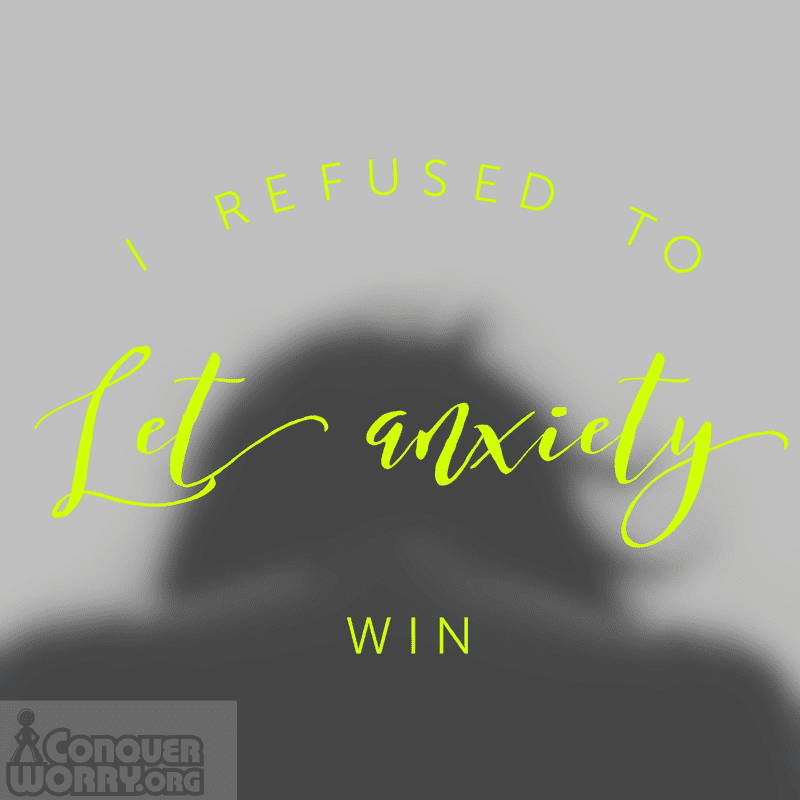




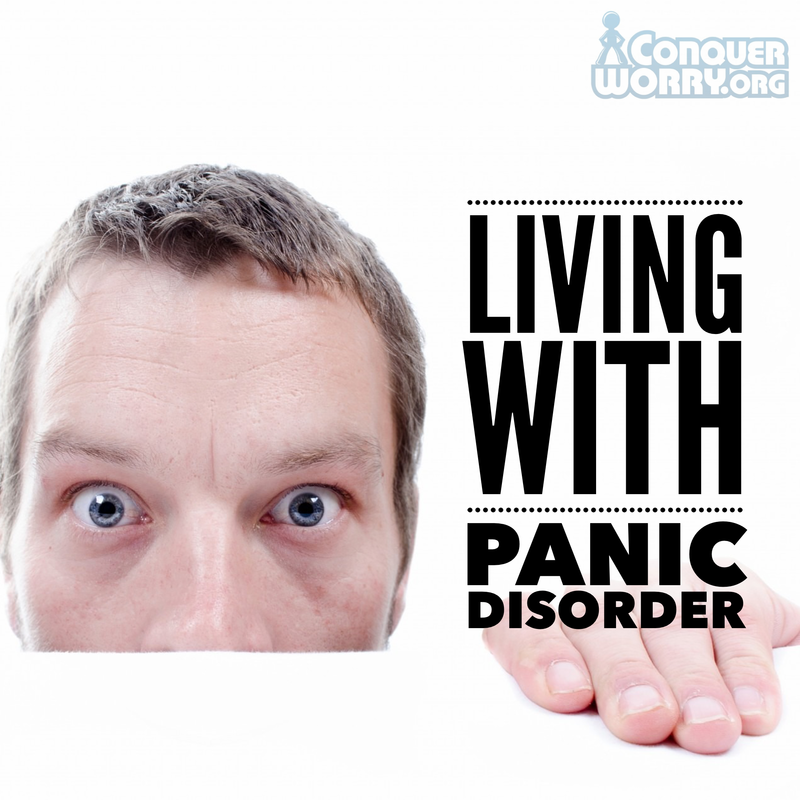


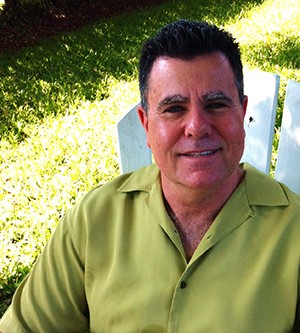
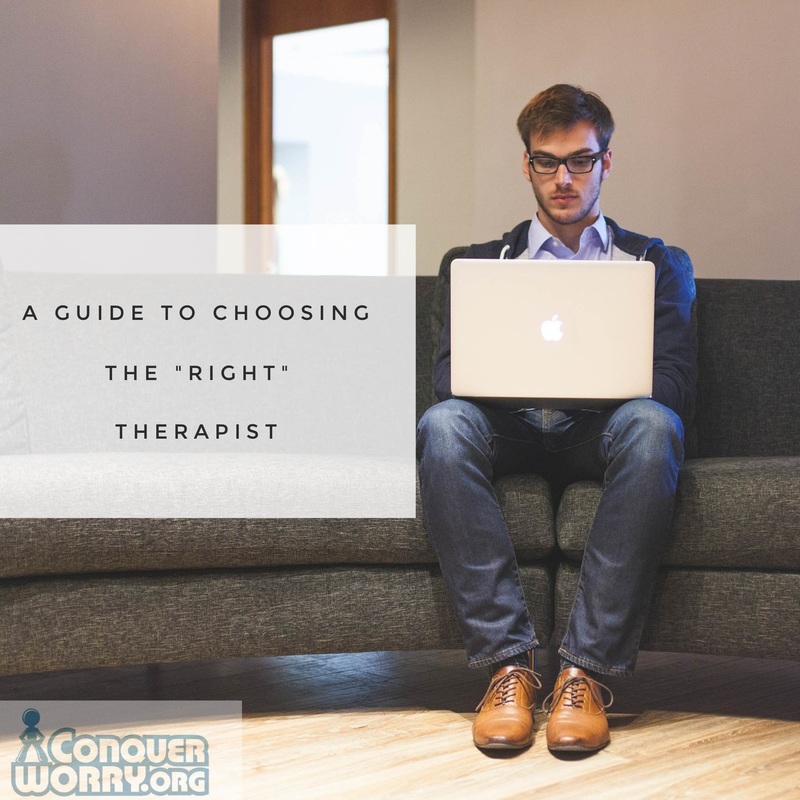


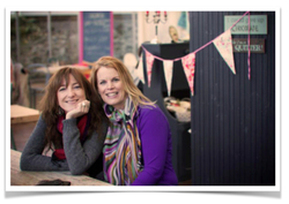
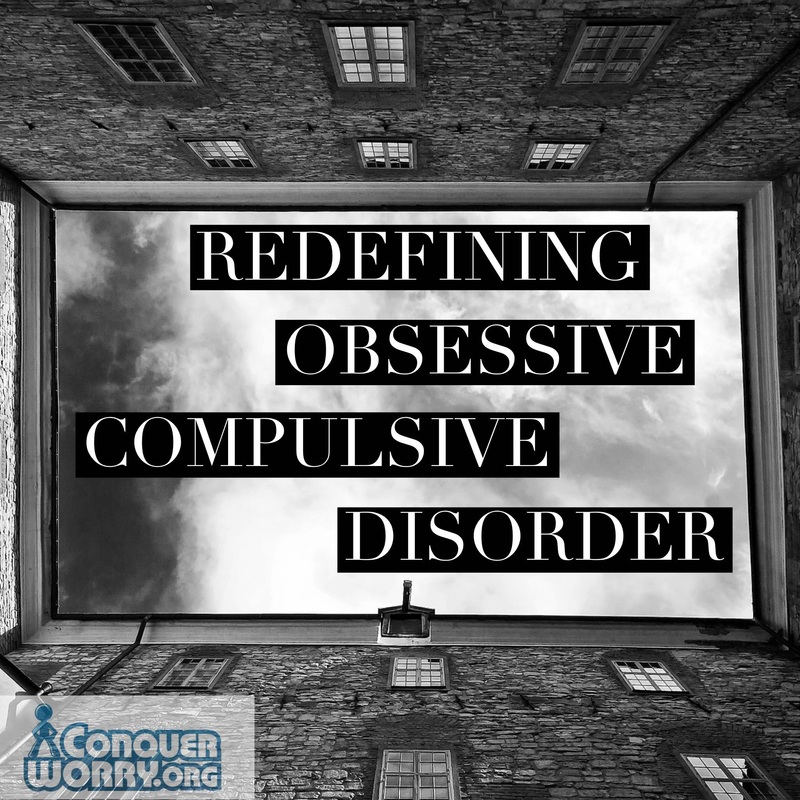



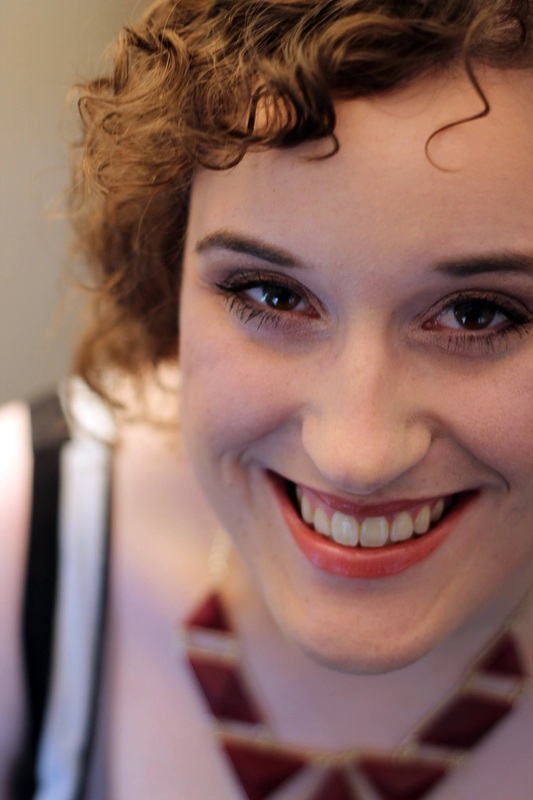

 RSS Feed
RSS Feed
